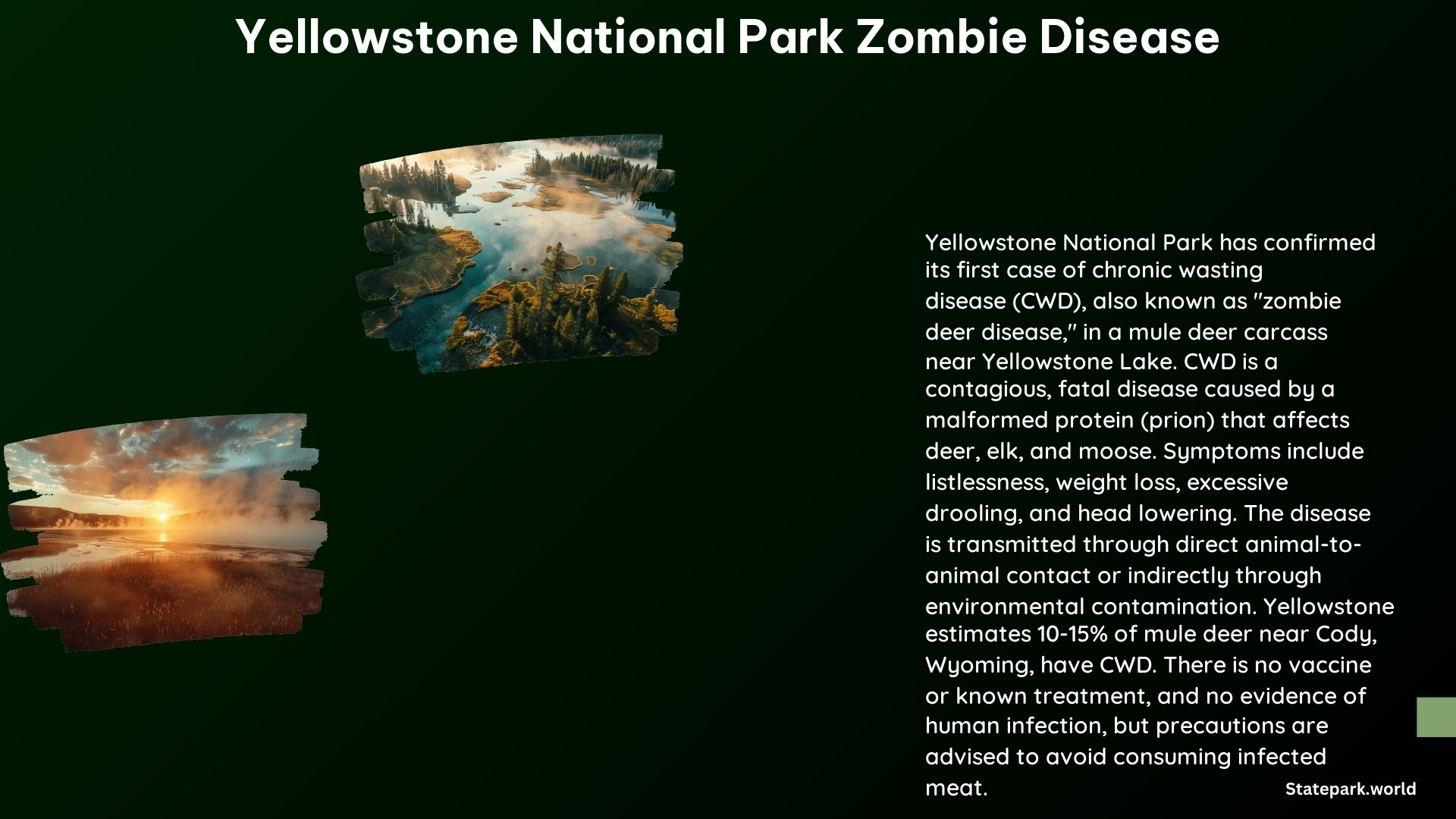Yellowstone National Park has recently reported its first confirmed case of chronic wasting disease (CWD), also known as “zombie deer disease,” in a deceased mule deer near Yellowstone Lake. This fatal illness affects deer, elk, reindeer, and moose, causing neurological changes that lead to symptoms such as excessive drooling, weight loss, and a characteristic “blank stare” before ultimately resulting in death.
Precautions for Visitors
Visitors to Yellowstone National Park should take the following precautions regarding the Zombie Deer Disease:
-
Avoid Contact with Sick or Dead Animals: If you encounter any sick or dead wildlife, notify a National Park Service (NPS) employee immediately and avoid contact with the animal. This is crucial as some disease-causing organisms can be passed between wild animals and people.
-
Do Not Consume Infected Meat: It is recommended that people avoid consumption of any part of an animal that is suspected or confirmed to have CWD. Although there is currently no evidence that CWD can infect humans, it is a precautionary measure to avoid potential risks.
Managing the Spread of the Disease

Yellowstone National Park is taking the following steps to manage the spread of CWD:
-
Increased Collaboration and Monitoring: The park will increase collaboration with the Wyoming Game and Fish Department and other state agencies to identify high-risk areas and enhance monitoring for the presence of CWD in other deer, elk, and moose.
-
Investigation of Carcasses and Sample Collection: The park will increase the investigation of carcasses and collection of samples for testing to better understand the spread of the disease.
-
Updating Surveillance Plans: Yellowstone is revising its 2021 Chronic Wasting Disease Surveillance Plan due to the recent detection, which is expected to be completed in 2024.
Key Facts and Figures
| Fact | Figure |
|---|---|
| First Confirmed Case | November 2023 |
| Transmission | Through bodily fluids, waste, and contaminated pastures or feed |
| Fatality Rate | 100% fatal with no known vaccine or treatment |
| Prevalence | About 10-15% of mule deer near Cody, Wyoming, which migrate into the park during the summer, are estimated to have CWD |
Yellowstone National Park’s discovery of the first confirmed case of chronic wasting disease, also known as “zombie deer disease,” in a mule deer near Yellowstone Lake has raised concerns among visitors and park officials. The park is taking proactive measures to manage the spread of this fatal illness, which affects deer, elk, reindeer, and moose, by increasing collaboration, monitoring, and surveillance efforts. Visitors are advised to avoid contact with sick or dead animals and refrain from consuming any potentially infected meat to ensure their safety and the preservation of Yellowstone’s wildlife.
References
- CBS News. (2023, November 17). Rare “zombie” disease that causes deer to excessively drool before death found in Yellowstone. Retrieved from https://www.cbsnews.com/news/rare-zombie-deer-chronic-wasting-disease-found-in-yellowstone-wyoming/
- The Guardian. (2023, December 22). ‘Zombie deer disease’ epidemic spreads in Yellowstone as scientists raise fears it may jump to humans. Retrieved from https://www.theguardian.com/environment/2023/dec/22/zombie-deer-disease-yellowstone-scientists-fears-fatal-chronic-wasting-disease-cwd-jump-species-barrier-humans-aoe
- National Park Service. (2024, February 29). Mule deer tests positive for chronic wasting disease in Yellowstone. Retrieved from https://www.nps.gov/yell/learn/news/23041.htm
- Smithsonian Magazine. (2023, November 30). ‘Zombie Deer Disease’ Documented in Yellowstone for the First Time. Retrieved from https://www.smithsonianmag.com/smart-news/chronic-wasting-disease-documented-in-yellowstone-deer-for-the-first-time-180983341/
